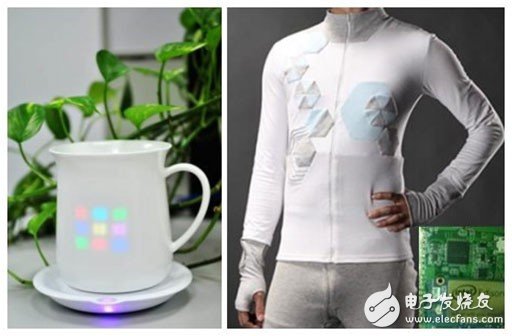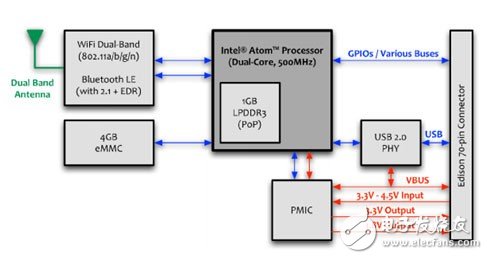The era of intelligent hardware is coming, some phenomena have stimulated people's nerves: 3D printers, cantilever aircraft, etc. have become within reach; software is becoming more and more open source; crowdfunding websites are in full swing... Under the right conditions, makers are gradually moving. Become the mainstream in the technology arena. In 2014, a large number of VCs and investors in China invested their money in smart hardware, which created an upswing in the industry. At this point in time, Intel introduced Edison in the hardware field and quickly pushed it into the commercial market, hoping to reach more developers directly.

Edison is the latest general-purpose computing platform, dual-core, 500 megabytes, the latest Atom (underlying core computing platform) below 22 nanometers, 100 megabytes of MCU, and powerful computing power. Nowadays, people can connect with anyone through mobile phones and other devices. In the future, in 2020, all devices will be connected intelligently, and the number of connections will be more than 50 billion. As a computing platform, Edison is small in size and can be used in a wide range of applications, such as industrial control, medical care close to people's livelihood, health, air detection, etc.
Designed for the "inventors" of the Internet of Things
Edison's own positioning is designed for inventors, entrepreneurs, and consumer product designers of the Internet of Things (IOT) and wearables to help them quickly prototype their products. Compared to the more "education-oriented" Galileo development board, Edison can be directly used for prototyping and mass production of small and medium-sized IOT solutions. Its product positioning is "modular SOC plus customized for specific application areas." The expansion board system is suitable for a variety of hardware developers and makers, as well as users who want to start a hardware venture to directly commercialize production.
Can Edison be used there?
In applications, Edison is suitable for small-sized devices that require strong computing power, such as robots, multi-rotor aircraft, 3D printing devices, remote asset management, audio processing, and more. At the previous Maker Carnival, it also showed Edison's smart water cups, smart clothes, smart door locks and intelligent agricultural control systems. As a versatile platform, Edison's application is not limited to a certain field. In the follow-up product line, in the subsequent product line, it is planned to introduce some specific product styles based on user feedback and usage.

What kinds of Edison development boards are there?
There are three kinds of Edison development boards available on the market. The first one is the pure Edison core module. There are four types of combinations depending on whether there is a carrier antenna and WiFi power consumption. The second is the core module plus Arduino. The interface carrier board kit is suitable for traditional manufacturers who want to use Arduino protection; the third is the interface board kit, which does not have Arduino interface, but is connected to simple I/O control and USBOTG standard interface, which is more suitable for professional Developer.
Anatomy of Edison's calculation module
Edison's small size is only 3.5 & TImes; 2.5 & TImes; 0.9cm, only slightly larger than the US standard stamps, and the core computing power is fully integrated on this module, the subsequent product upgrades will be based on this small system . The block itself is not open source, but all the carrier boards and software are open source. Intel hopes to leave the more complex work of improving system performance and capabilities to its own solution, allowing hardware developers and makers to focus more on how to bring these capabilities out through different interfaces and external devices.

As you can see from Edison's core module framework, there are many key factors integrated here, such as a dual-band WiFi and Bluetooth, and the module Broadcom. Because the box itself is provided for the tablet, the compatibility of the software is the same as that of the platform board, and the performance is very strong. It also integrates a 100 MHz MCU controller, which will be officially put into use in version 2.0, and will also release an RTOS that uses the MCU controller to control peripheral sensors. Below is the PMIC intelligent power control chiplet, which is also widely used in embedded and intelligent hardware, and the integration is also very high. At the far right is the 70pin connector, and all of its documentation and interface parameters are open source.

OEM Audio Transformer,OEM Transformer,Audio Transformer,Customized Audio Transformer,outdoor lighting transformer
Guang Er Zhong(Zhaoqing)Electronics Co., Ltd , https://www.poweradapter.com.cn